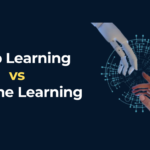The term “Iganony” might sound unfamiliar to many, but it represents a fascinating concept that blends innovation, technology, and philosophy. While it does not correspond to any widely recognized term in current literature or common usage, the idea of “Iganony” provides a unique lens through which we can explore various aspects of modern life and thought. This article delves into the potential implications and interpretations of “Iganony,” examining how it might influence technology, culture, and personal philosophy.
Understanding Iganony
Though “Iganony” is not a standard term, let’s conceptualize it as a hypothetical term representing a fusion of innovative technology and philosophical inquiry. Imagine “Iganony” as a concept or framework that combines cutting-edge advancements with deep, reflective thought. It could embody the intersection of artificial intelligence, ethics, and human experience, offering a new perspective on how these elements interact in our evolving world.
The Role of Technology in Iganony
In the realm of technology, Iganony could represent the next frontier where artificial intelligence (AI) and machine learning play pivotal roles. Imagine a future where AI is not just a tool but a collaborative partner in human endeavors. The essence of Iganony could be an advanced AI system that integrates seamlessly into daily life, providing insights, enhancing productivity, and fostering creativity.
- AI and Human Collaboration: In the Iganony framework, AI would be more than a set of algorithms; it would be a collaborative partner. This partnership would extend beyond simple tasks to involve deeper problem-solving and creative endeavors. AI could assist in complex decision-making processes, offering solutions that take into account not just data but also ethical considerations and human values.
- Ethical AI Development: Iganony would emphasize the importance of ethical AI development. This includes creating AI systems that respect privacy, avoid biases, and operate transparently. The concept could advocate for AI that not only performs tasks efficiently but also aligns with human ethical standards, ensuring that technological advancements benefit society as a whole.
- Human-Centric Design: The technology under the Iganony banner would be designed with a human-centric approach. This means prioritizing user experience, accessibility, and the overall well-being of individuals. The goal would be to create technology that enhances human capabilities without compromising personal autonomy or dignity.
Philosophical Implications of Iganony
The philosophical dimension of Iganony could involve exploring the impact of technology on human thought and society. It may prompt questions about the nature of consciousness, identity, and the role of technology in shaping our understanding of these concepts.
- Consciousness and AI: Iganony might stimulate discussions on whether advanced AI systems could achieve a form of consciousness or self-awareness. It raises questions about the nature of consciousness itself and whether it is a uniquely human trait or something that could potentially be replicated in machines.
- Identity and Technology: As technology becomes more integrated into our lives, the concept of identity may evolve. Iganony could explore how digital interactions and AI influence personal identity and self-perception. It may address concerns about how technology shapes our social interactions and the potential blurring of lines between virtual and physical identities.
- Ethics and Human Experience: Iganony would likely delve into the ethical implications of technological advancements. It would consider how technology affects human experiences, relationships, and societal values. The framework could encourage a balanced approach to innovation, ensuring that progress does not come at the expense of ethical considerations or human well-being.
Cultural Impact of Iganony
Culturally, Iganony could represent a shift towards integrating technology in a way that enriches human life and fosters positive societal changes. This concept might influence various aspects of culture, including art, communication, and education.
- Art and Expression: Iganony might inspire new forms of artistic expression by leveraging technology in innovative ways. Artists could use advanced tools and AI to create immersive experiences that challenge traditional boundaries of art and creativity. This integration could lead to novel artistic movements and cultural phenomena.
- Communication and Interaction: The concept could impact how people communicate and interact with each other. Technology under the Iganony framework might enhance virtual communication tools, making interactions more engaging and meaningful. It could also address issues related to digital communication, such as ensuring that technology fosters genuine connections rather than superficial interactions.
- Education and Learning: In education, Iganony could revolutionize how knowledge is imparted and absorbed. Advanced technologies could facilitate personalized learning experiences, adapt to individual needs, and provide access to a wealth of information. This approach could democratize education and make learning more accessible and effective.
Challenges and Considerations
While the concept of Iganony holds promise, it also presents several challenges and considerations. These include:
- Privacy and Security: As technology becomes more integrated into our lives, concerns about privacy and security will intensify. Ensuring that AI systems and digital platforms protect user data and maintain security will be crucial for the success of the Iganony framework.
- Bias and Fairness: Addressing biases in AI and ensuring fairness in technological applications will be essential. Iganony must include mechanisms to identify and mitigate biases, ensuring that technology serves all individuals equitably.
- Ethical Dilemmas: The rapid pace of technological advancement may outstrip our ability to address ethical dilemmas. Iganony would need to anticipate and navigate these challenges, ensuring that progress aligns with ethical principles and human values.
Conclusion
The concept of Iganony, while hypothetical, offers a thought-provoking perspective on the intersection of technology, philosophy, and culture. By envisioning a framework where advanced AI and philosophical inquiry converge, we can explore new possibilities for enhancing human experience and addressing the ethical implications of technological progress. As we move forward, the principles of Iganony could guide us towards a future where technology enriches our lives while respecting our core values and ethical standards.
FAQs about Iganony
- What does “Iganony” mean?
Iganony is a hypothetical concept that represents the intersection of advanced technology and philosophical inquiry. It envisions a future where AI and technology are deeply integrated with human values and ethical considerations. - How could Iganony impact technology?
Iganony could lead to more collaborative and ethical AI systems, human-centric technology design, and advancements that prioritize user experience and societal benefits. - What philosophical questions does Iganony raise?
It raises questions about the nature of consciousness, the influence of technology on identity, and the ethical implications of technological advancements. - How might Iganony influence culture?
Iganony could inspire new forms of art, enhance digital communication, and transform education by integrating technology in ways that enrich human experience and foster positive societal changes. - What challenges does Iganony face?
Challenges include ensuring privacy and security, addressing biases in AI, and navigating ethical dilemmas associated with rapid technological advancements.














